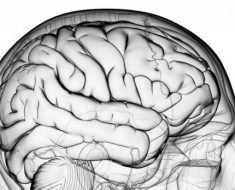A powerful new anti-cancer therapy, called CAR-T, has shown great promise in treating blood cancers. Last year, the Food and Drug Administration approved the treatment for acute lymphoblastic leukaemia, and the results have been very promising, with remission rates of up to 83% for the very worst case patients, whose disease had returned following conventional treatments.
CAR-T (chimeric antigen receptor T-cell) therapy uses the body’s immune system to destroy cancer cells. It involves taking a patient’s T-cells (a type of immune cell) and genetically altering them so they attack cancer cells rather than invading organisms, such as bacteria. Large numbers of these CAR-T cells are grown in the lab before being infused into the patient.
With the recent success in mind, it is tempting to consider whether this approach would work in other cancers, particularly cancers that are notoriously difficult to treat, such as brain tumours. Unfortunately, this has not happened yet, and the reason is to do with the nature of cancer itself.
Cancer is not just one disease but many, each requiring a different treatment, and brain tumour treatment has a dismal history, with high-grade glioblastoma patients having an average survival rate of one year after diagnosis.
Why so difficult?
So what is the problem with treating solid tumours and brain tumours in particular? The answer lies in the nature of the disease and the treatment. In leukaemia, there is a single, identifiable target: a molecule on the surface of the tumour cell called CD19. It’s a relatively straightforward task to engineer a CAR-T cell to attack that target and destroy the tumour.
In high-grade brain cancers (where cancer cells spread and grow more quickly), the tumour is heterogeneous, which means the target molecules on the tumour cells are constantly changing over the course of the disease. In different areas of the same tumour you will have different target molecules, so creating a CAR-T cell to attack the tumour becomes an impossible task.
Also, high-grade brain tumours build a network of blood vessels to support and feed the tumour as it grows and spreads to other areas of the brain, in a process known as “angiogenesis”. Understandably, this makes some brain tumours very difficult to treat and remove.
Another feature of brain tumours involves another type of immune cell called the regulatory T-cell. These are the cells that stop our immune system from attacking our own bodies. (When they go wrong they cause autoimmune diseases such as rheumatoid arthritis.) Brain tumours can hijack these cells to create an immunosuppressive micro-environment for the tumour to live in. Even if immune cells could get to the site of the tumour, they would be “switched off” by the actions of these regulatory T-cells, and the tumour would be safely protected from the attack.
Dismantling safe spaces
The outlook for using immunotherapy to treat brain cancer looks poor with several barriers to be overcome, but let’s look again at CAR-T therapy.
We can create a specific immune cell to attack a specific target and fourth-generation CAR-T cells can be produced to attack two or more specific targets – but this isn’t enough. So instead of focusing on the moving target of the tumour cell, perhaps we should look at other targets.
The processes of angiogenesis (the development of new blood vessels) and immuno-suppression are driven by cells that have their own unique molecular characteristics, so let’s target these areas. Let’s take away the “safe space” the tumour has created for itself by destroying the micro-environment of the tumour, allowing our immune cells to do their job of destroying it.
There is a major problem that would need to be overcome for this to work, which is systemic toxicity – the result of the engineered CAR-T cells attacking the wrong healthy target cells. The last thing we need is for our CAR-T cells to destroy new blood vessels or all regulatory T cells.
Source: Read Full Article





